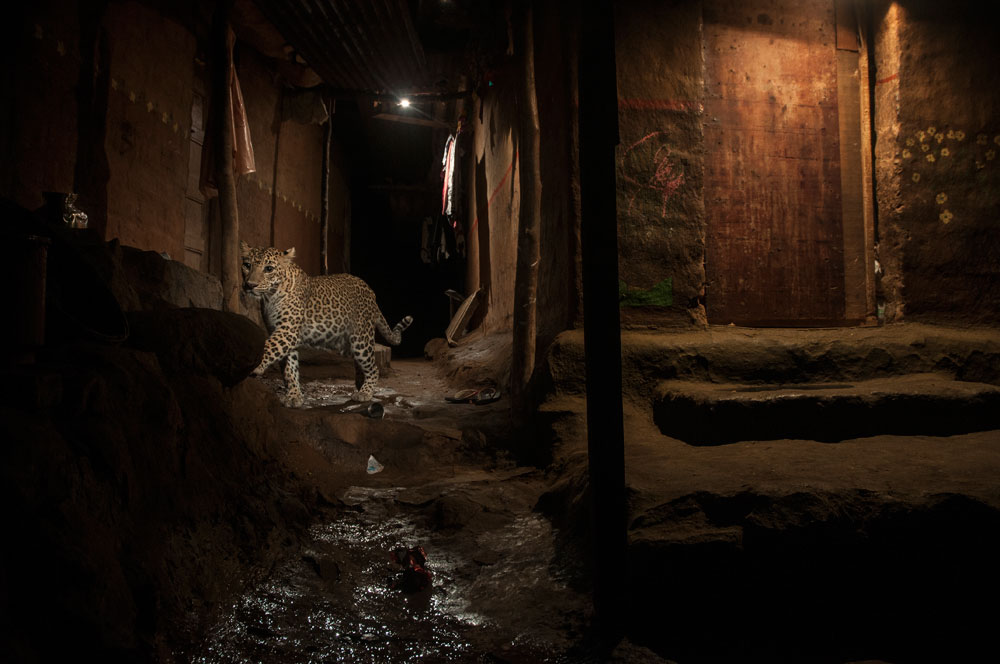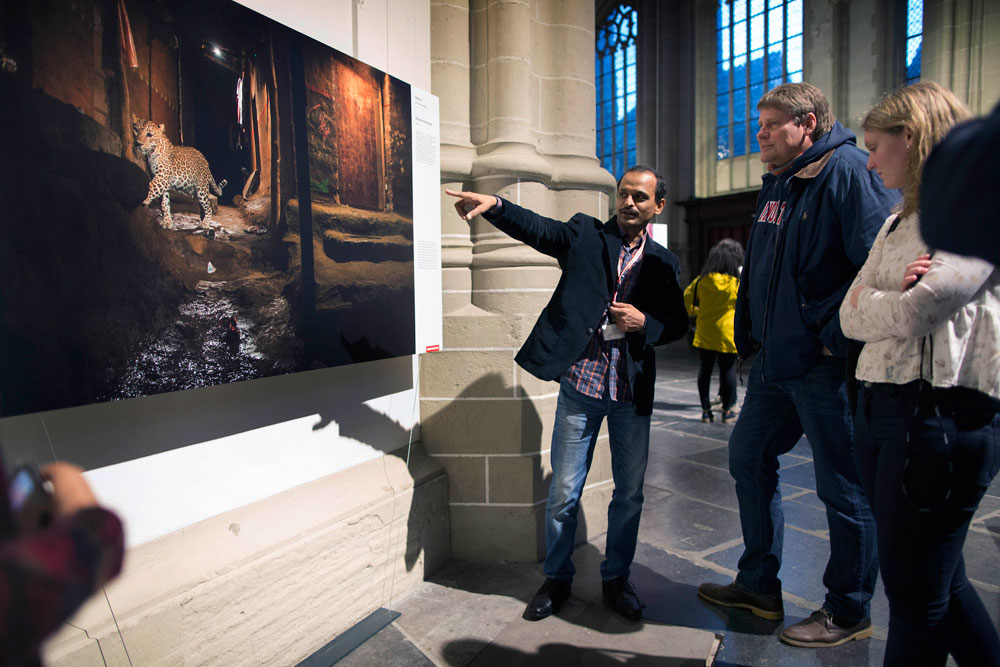An Interview with Nayan Khanolkar
Photojournalist/Photographer
WPP Prize: Nature – Second Prize, Singles
By Anne Pinto-Rodrigues

Big Cat In My Backyard! A leopard walks at night through Aarey Milk Colony, a residential, recreational and farming settlement adjacent to the Sanjay Gandhi National Park, in suburban Mumbai. Some 35 leopards live in the park and increasingly venture into surrounding areas in search of prey such as the stray dogs that gather round garbage dumps. This raises the potential for human-leopard conflict, with reports both of attacks on humans, and of leopards caught in poaching traps. © Nayan Khanolkar
 Nayan Khanolkar is a self-taught avid nature photographer, who has been traveling the length and breadth of India to document Indian wildlife for over a decade and a half.
Nayan Khanolkar is a self-taught avid nature photographer, who has been traveling the length and breadth of India to document Indian wildlife for over a decade and a half.
A decade-long career of bird photography, which gave him acclaim, was followed by an opportunity to work on documenting big cats in urban areas. Urban leopards have been his obsession for the last two years and have become the sole focus of his photography. It is an ongoing endeavour to sensitize people to animal behavior and raise awareness on conservation of India’s rich wildlife heritage through my pictures.
Hello Nayan. Thank you for agreeing to talk to us. Please tell the readers of Lens magazine about yourself.
I’m a self-taught, nature photographer from Mumbai, India. For over 15 years now, I’ve traveled the length and breadth of India to document the country’s wildlife. My primary role as a biology teacher supplements my understanding of the flora and fauna, and the animal behavior, I encounter on my field photography assignments. I’ve spent a decade photographing birds, which brought me acclaim, and led to an exciting opportunity, documenting big cats in the urban areas of India. Urban leopards have become the sole focus of my photography and a single-minded obsession for the last two years. I am constantly working on sensitizing people to animal behavior and through my pictures, I hope to raise awareness about conserving India’s rich wildlife heritage.
How did you get interested in wildlife photography? How did your career in wildlife photography evolve?
I was lucky to grow up in a suburb of Mumbai, where my home was surrounded by crop fields and rich birdlife. All my school vacations were spent at my native place in Goa, which happens to be one of the most scenic states in India. This led to my interest in nature, since my early days. When I was 12, I read a book called ‘Man-Eaters of Kumaon’ by Jim Corbett, which had a profound impact impact on my young mind. This book is what inspired me to pursue wildlife photography.
More recently, there was an incident in the Uttarakhand state of North India, in the vicinity of Corbett National Park, where a leopard was caught, caged and burnt alive by villagers. This barbaric incident redirected my focus towards big cats and the issue of human-animal conflict.
When I won the ‘BBC Wildlife Photographer of the Year’ Award in October 2016, for the Urban category with my ‘Alley Cat’ image, that catapulted me on the global stage.
Congratulations on winning the Second prize in the Nature, Singles category with your ‘Big Cat In My Backyard!’ image! How does it feel to have won this prize?
I am delighted to have won this prize! The World Press Photo Contest has extremely stringent criteria for choosing winners. That’s what makes this prize even more special. It also strengthens my international profile and I’m sure this award will help open doors in the future.
Tell us more about your winning image ‘Big Cat In My Backyard!’ and the experience of photographing it. What was the motivation behind this image?
This picture was taken in a tribal settlement in Mumbai, on 15th January, 2016. For me, it represents the unique coexistence between humans and leopards, in the heart of one of the largest cities in the world.
This image is part of a self-assigned, self-funded ongoing project – Urban Leopards. Everywhere in India, there were instances of leopard attacks on humans and the subsequent retaliation, in which leopards were harmed. These incidents were grabbing headlines but there was no attempt to study what was triggering these attacks. Between 2011 and 2013, there were several leopard attacks in Mumbai (due to random translocation), which gave rise to an urgent need to monitor leopard movement on a long term basis in the city. I wanted to undertake a project to do this and unfortunately, it was rejected by funding agencies. Finally, I decided to start on a small scale, with my own funds.
All over the world, rampant development is taking a toll on the environment and India is no exception. As more land is brought under urbanization, the buffer between cities and forests is gradually becoming thinner. Wildlife is no longer restricted to jungles and they have adapted to the human landscape. We need to accommodate that, rather than eliminating these animals.

Nayan Khanolkar talks about his prize-winning image ‘Alley Cat’ to visitors at the Canon Night, organized by the World Press Photo ©Werry Crone / Hollandse Hoogte
What was involved in the making of this picture?
The moment I saw this particular lane in 2014 and learned that there was a leopard moving through it, an image was created in my mind. I made an immediate decision to get this picture. Of course, it involved a lot of planning. From placing the camera and the strobes at specific locations, to, most importantly, placing the infrared (IR) triggers such that it ensured a photo was captured when the leopard was at a particular spot. Still, many factors were beyond my control.
The idea was to get a photo of a leopard, integrated in the urban environment without letting the subject dominate the image, thus bringing out the adaptive nature of the animal. The house and the steps formed an important part of the composition, and the light reflecting off it, adds to the picture. I deliberately matched the strobes to recreate the effect of incandescent bulbs, characteristic of the tribal settlements in Mumbai.
When I finally saw this picture of the leopard, I realized that it was a special one.
Read the full article on Lens Magazine Issue #32

